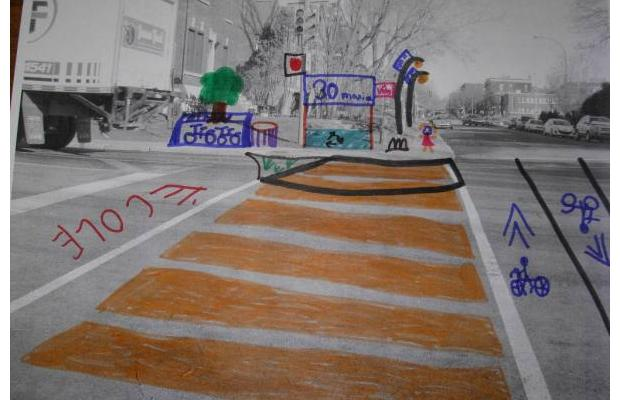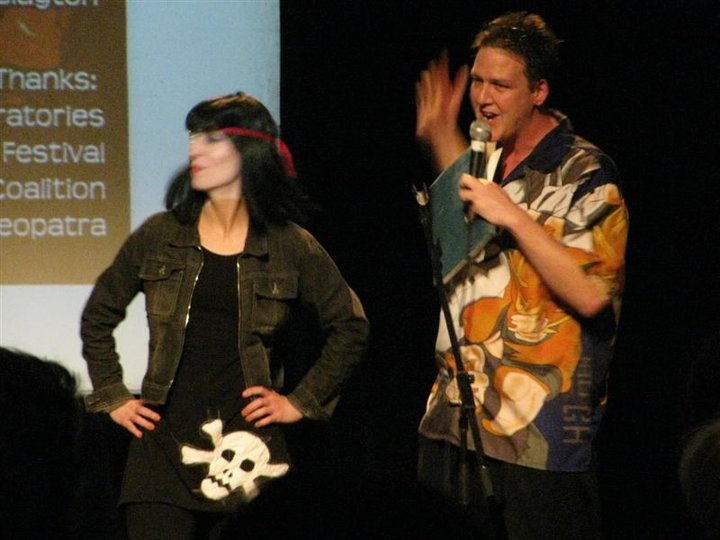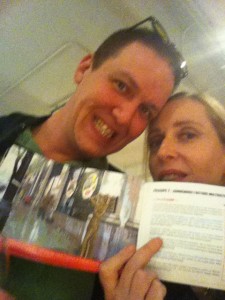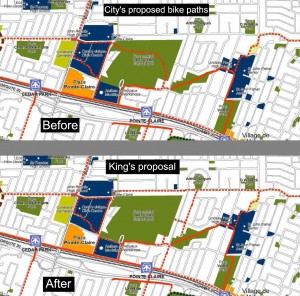Urban planning as a tool for activism and education
Urban planning is often perceived as a professional and bureaucratic field that involves everything from traffic flow and sewer systems to city infrastructure and zoning bylaws. Although urban planning is not usually associated with activism or education (outside of specialized fields), change is in the air as both activists and teachers embrace urban planning as a tool for social change and empowerment.
In Montreal this renewed interest in urban planning has been driven largely by the popularity of upstart political party Projet Montreal and its leader Richard Bergeron, himself an accomplished urban planner. His inspired designs and blueprints pepper the internet, each one a tantalizing vision of what the future could hold. Not only does Bergeron advocate safer, pedestrian-friendly communities, but also big-ticket items such as a Maritime Gateway for Montreal and a network of tramways to improve public transportation. Bergeron’s plans are not only visionary and inspiring, they are also accessible, visually-stimulating and a pleasure to pore over. Bergeron’s urban plans have the power to open up the imagination and visualize a better future.
Add to this Montreal-centric websites and blogs such as Spacing Montreal and Coolopolis, which have been providing even more valuable food for thought, and it is easy to see that interest in urban planning is skyrocketing in Montreal.
As though taking their cue, in 2010 Montreal’s Urban Ecology Centre launched a “Green, Healthy and Active Neighbourhoods program” and began teaching children how to identify and photograph dangerous traffic configurations, then suggest remedies, complete with their own blueprints superimposed on the photograhps they took.
Not only is this empowering program teaching young students how to challenge their car-centric surroundings and present more viable alternatives, but it is also garnering a lot of positive media attention, with speculation that the students’ work might actually have an effect on improving urban planning in their neighbourhood.
Activists are also starting to employ urban planning concepts in their own campaigns, presenting alternative blueprints and visions of the future to those top-down models that are seen as oppressive, injust, or just plain sloppy. One such example that springs to mind is the recent fiasco on the Lower Main whereby corporate developers wanted to demolish heritage buildings in Montreal’s most storied historic site, including the famous Café Cleopatra, in order to to build an office tower. Mobilizing under the Save the Main banner, artists and stakeholders have tried many strategies to save the site, including protests, performances, petitioning, attending public consultations, lobbying politicians and even legal action. While developers presented their own banal urban plan for the site, esssentially destroying heritage and living culture in favour of commerce, artists with the Save the Main coalition fought back by creating and presenting their own urban plan, one that respects the historic site and living culture and indeed repositions these as major assets within the new Quartier des Spectacles.
In December, months after the presentation at Pecha Kucha night, City of Montreal officials conceded that the artists’ vision of the Lower Main was far superior, and even issued a booklet about the future of the area that incorporates many of the artists’ ideas. In an about-face, the City of Montreal is now suggesting that architecture and living culture will be respected, protected and enhanced in the historic site, while the developer has backed off from his demolition plan.
While there is no telling if the City of Montreal will stick to its word, this case can still be seen as an example of artists re-appropriating the tools of the oppressor, in this case urban planning, as a way of protecting living culture and to present the City with an actual artistic vision.
On the other side of the island, the sleepy bedroom community of Pointe Claire has recently been struggling to adopt a new urban plan after decades of suburban, car-centric planning. Unlike the City of Montreal’s top-down, in-your-face, approach to urban planning, Pointe Claire has spent 20 years, invested over 10,000 hours, and held various public consultations to get the project right. Even after the final public consultation was complete, Pointe Claire still had its ears open. When Optative Theatrical Laboratories contacted the mayor, Bill McMurchie, about proposed plans to run a connector bike path through a pristine nature park (Terra Cotta), the mayor was ready to listen. Concerned that the path would lead to ecological damage, OTL presented an alternative plan:
Pointe Claire listened carefully, scrapped the asphalt path running through the nature park, and made other adjustments to the new urban plan, such as the inclusion of a new path north of the Public Works to make the park more accessible, especially to seniors. As a result of this intervention, Terra Cotta nature park is both more accessible and protected, as depicted on the new map of bike paths.
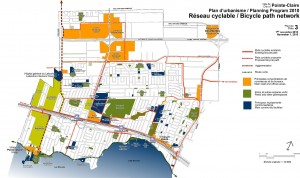
Once again, with imagination, artistic vision, and solid planning, artists can claim victory in this challenge to safeguard the park and enhance the urban landscape. Meanwhile, Pointe Claire can be proud that it has done everything within its power to ensure the most logical and agreeable plan, which was adopted unanimously.
The lesson here for artists, activists, and educators is that urban planning, far from being some esoteric field for bureaucrats and engineers, can actually work as a catalyst for education, empowerment and social change. Far from Montreal’s previous top-down, capitalist-friendly model to urban planning, the new paradigm (as signified by Pointe Claire’s inclusive approach) is about collaboration, community-building, and creating (or reconfiguring) public spaces that are safe, enjoyable, dynamic and visionary. The sooner municipal authorities recognize that the keys to urban planning lie in consultation, collaboration, and artistry, the sooner Montreal will be equipped to develop into the magnificent democratic and sustainable city it aims to be.
